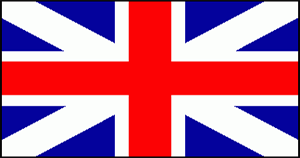War of 1812 Battles |
Colonial Wars |
American Wars |
Capture of Cuyahoga Packet
July 2, 1812 On the Canadian side of the Detroit River
Books on Capture of Cuyahoga Packet are available from Amazon.com
 |
|||||||||||||||||||||
|
In the summer of 1812, while Gen. William Hull's Army of the Northwest is hacking its way northward through the forests of Michigan, William Beall is aboard the schooner Cuyahoga Packet, drifting calmly up the Detroit River to rendez-vous with Hull at Fort Detroit. Beall, an assistant quartermaster general, considers himself lucky to travel by water. The alternative is to accompany Hull on the forced march through mosquito-infested terrain in the heat of early July.
Beall has relieved Hull's troops of some of the heavier supplies, including the army's musical instruments. He has also taken on board 30 or so regular soldiers who are too sick to make the journey overland. Hull's son and aide-de-camp, Abraham, thought it wise to pack the general's personal belongings on the boat, including his journals and all his correspondence with U.S. Secretary of War William Eustis. Nowhere in his recent letters does Eustis state clearly just how close his country is to declaring war on Great Britain.
On the Canadian side of the Detroit River, at Amherstburg, a young French-Canadian officer of the Provincial Marine can make out the American flag waving on the schooner as it drifts casually by the British fort. Lt. Frederic Rolette is about to add to his reputation as a bold and quick-thinking officer. He orders 6 armed men into a longboat and they row vigourously towards the larger American ship. The Cuyahoga's captain, Luther Chapin, is no doubt expecting greetings from the usually-friendly Canadians. Instead, he is shocked to find himself staring down the barrels of 6 muskets as Rolette orders the mainsails lowered. Chapin looks to a confused Beall for orders, but one warning shot from Rolette is all the persuading the captain needs to bring his vessel to a stop.
Rolette boards the schooner to find the 30 American soldiers on deck - a force 6 times the size of his own party. Luckily for Rolette, all the Cuyahoga's arms are stowed below decks and the Americans are too sick to fight. As Rolette orders everyone locked-up, he informs Beall that news of the United States' declaration of war had arrived in Amherstburg the previous evening. Beall and his men offer no resistance, no doubt convinced that Rolette is somehow mistaken. As a final touch to the proceedings, Rolette discovers the stash of musical instruments. He then proceeds to sail the Cuyahoga Packet into Amherstburg while the humbled Americans play "God Save The King."
Only upon closer inspection of the captured goods do the British realize their good luck. Hull's correspondence with Eustis describes in detail the army that is presently marching north towards Detroit; the strength and morale of its regiments, the state of supplies, and possible offensive strategies. Hull's personal papers betray his growing concerns about facing native warriors in battle. All of this information is forwarded to Brock who uses it to develop his strategy for attacking Fort Detroit.
